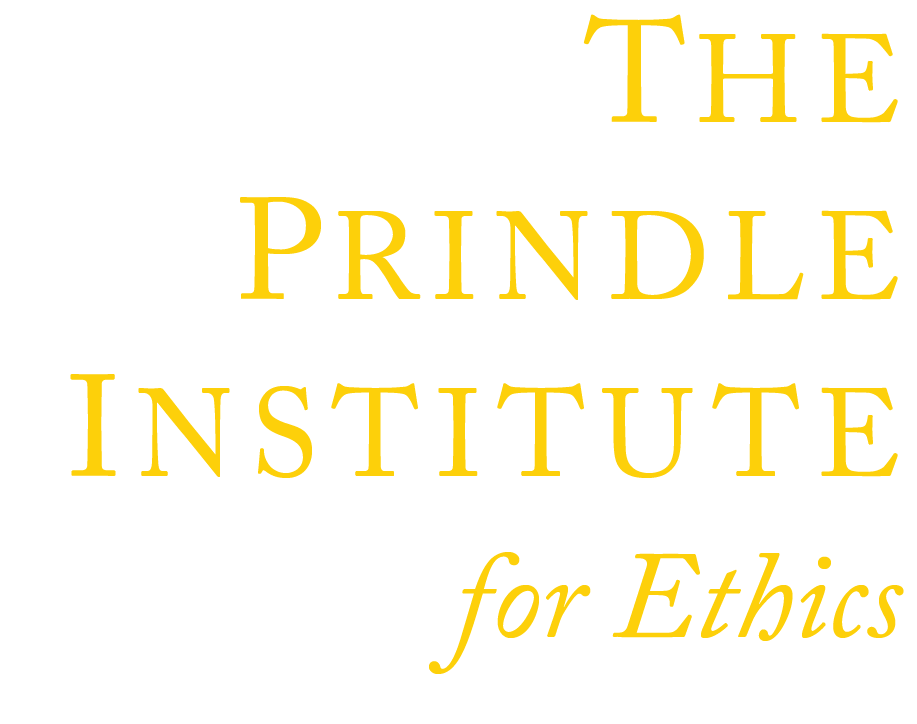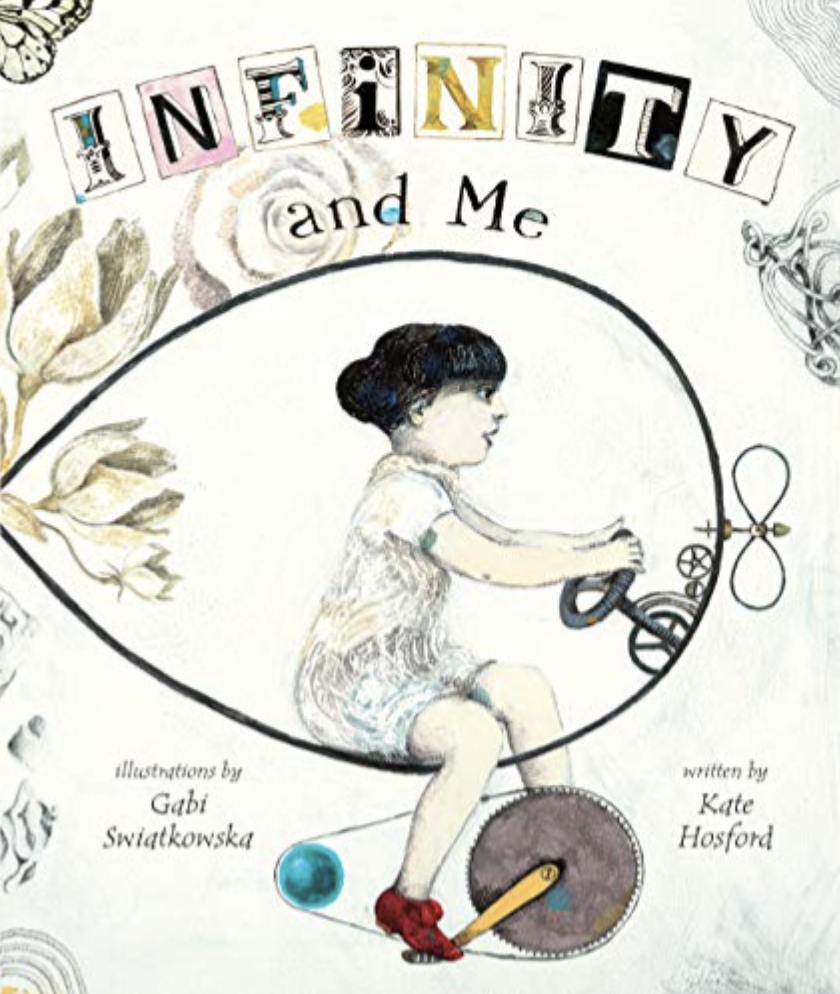Infinity and Me
Book Module Navigation
Summary
Kate Hosford’s charming picture book Infinity and Me unpacks the idea of infinity and its relationship to value.
Infinity and Me follows Uma on her journey to discover the meaning of infinity. She goes about her day asking different people in her life how they see infinity. She gets answers that range from the infinity symbol to a family tree to a noodle getting cut in half forever. Uma also brainstorms activities she would like to be infinite, and realizes that some things are better off finite. In the end, Uma’s grandma notices Uma’s red shoes when she had thought nobody noticed them; in turn, Uma realizes that feelings like love for her grandma can be infinite as well.
Guidelines for Philosophical Discussion
Defining Infinity: Actual vs. Potential Infinity
Infinity is a significant concept to humans. Infinity has been an important topic to philosophers for decades because of the ways it helps us the world. Depending on the age group you are working with, the students will likely already have some idea of what infinity is (“a really big number” and “forever” are the most common). The goal of defining infinity as a group after reading is to broaden their conceptions and specify what is and is not infinity.
In a philosophical sense, infinity is unbounded, limitless, or endless. This is a very broad conception and can be whittled down through discussions of Zeno’s Paradox and actual and potential infinity. Here is a common example of Zeno’s Paradox: Imagine you are standing against one wall of a square room and want to walk to the opposite one. In order to walk to the opposing wall, you will have to walk halfway between where you are now and the wall. Then, you have to walk halfway again from your current position to the opposite wall. If you have to keep walking halfway to get to the other side, this would make walking from one side a room to the other an infinite process. However, we know from experience that we can get from one side to the other in a finite amount of time, so is it really infinite? These ideas can be discussed in the “noodle” section of the book. This expands the idea of infinity beyond just the idea of “forever” using a non-numerical example.
Value and Infinity
When Uma begins brainstorming activities that she would like to be infinite, she thinks about things like having recess forever, being eight forever, and eating ice cream forever. However, upon further reflection she realizes that some of these things are better when they remain finite. For example, she realizes that without school before and after recess, it might not even be recess anymore. Students can discuss how they value certain things in their lives and how their value may increase or decrease if they continue infinitely. Perhaps certain things are more valuable because they have an end. These examples can lend themselves to interesting discussion about why we might not wish for certain events to continue forever, even if they’re enjoyable in the moment.
One might also choose to focus on the example of having recess forever and delve into conceptual analysis or morality. With conceptual analysis, the discussion can center around the definition of recess (and whether or not recess is still recess in its full capacity without school before and after it), its purpose, and whether it would be possible for it to continue infinitely and still retain its meaning.
You could also tie this discussion to Immanuel Kant’s “Test of the Universalized Maxim.” This is a test to determine the morality of an action by arguing that an action is immoral if, when applied to everyone in the world, it would become self-undermining or contradictory. For example, Uma wishes that recess could be infinite. However, if recess were infinite for everyone, one could argue that recess in and of itself could not exist anymore (because there is nothing to be taking a recess from). Thus, according to Kant’s test, the maxim of wanting recess to be infinite would be self-undermining and thus an immoral wish.
Feelings of Infinity
In the very beginning Uma is all by herself looking up at the stars and starts feeling small and unnoticeable in an infinite world full of infinite things. Uma goes around to each of her friends and family members to ask what infinity means to them. The book explores many different understandings of infinity. The example of Uma’s grandmother complimenting her red shoes demonstrates how small finite moments can feed into larger (infinite) things like love.
Questions for Philosophical Discussion
Defining Infinity: Actual vs. Potential Infinity
- What does infinity mean to you? What comes to mind when you think of infinity?
- In the story, when Uma asks her grandma about infinity, she said that she thinks about a family tree that goes on and on. What do you think of when you think about infinity?
- What is something that is infinite in your life?
- What are some examples from the book of infinite things? Were they really infinite? Why or why not? How do you know?
- Is the noodle infinite?
- If you said the noodle isn’t infinite because it would get too small to cut, what if you had a special knife that could cut the noodle forever? If you could cut it forever, does that make it infinite?
- Is the noodle infinite or is the cutting infinite?
- Is it still one noodle if you keep cutting it?
- If you kept cutting the noodle forever, could you ever reach the end of the noodle?
- Uma said she walked to have recess for infinity. If I want to have recess for infinity, but sometimes I take a break, am I really having recess for infinity? Do I have to keep doing it forever without stopping? (If you stop doing something, but then start again, is it still infinite?)
- What does it mean for something to be forever?
Value and Infinity
- What things in your life would you want to be infinite?
- How might [examples from children] being infinite affect other people?
- Would you want your birthday to be every day? Would you still want your birthday to be forever if it meant that everyone else’s birthday was every day, too? Why or why not?
- What makes your birthday special?
- How does it make you feel when you find out that something in your life is ending? Does this make you appreciate the time that you have with the person or activity more in the moment?
- Have you ever been scared to try something new, but then tried it and found out you really liked it?
- Do you think that sometimes it’s better for some things to end so you can try new things? Or, do you think it’s better to stick to one thing you know you like?
- Would you rather do one thing you love for the rest of your life, or experience many things, some of which you love and some of which you hate? Why?
- If they choose “one thing you love:” Do you think you would eventually get bored of it?
Feelings of Infinity
- How was Uma feeling when she was first looking up at the stars?
- Uma said she was feeling small because the world is so big and feels infinite. If she is only a small part of the world, does that make her less important? Why
- How did she feel looking up at the end? Why did she feel comforted instead of small?
- Is there anything or anyone you love as much as infinity? How do you know?
- What did Uma want throughout the book?
- Did she want to learn about how big the world is? Did she want to talk to people? Did she want people to notice her shoes?
- How did Uma feel when no one noticed her shoes?
- How did she feel when her grandmother complimented her shoes?
- How might little choices we make have big impacts on those around us?
Find tips for leading a philosophical discussion on our Resources page.
Extension Activity
Ask these questions on the last days of your school term.
- Our time together isn’t infinite. This is our last meeting. Is our time together still valuable?
- Is it more valuable because it ends?
- Can now use the skills we’ve learned together forever, even though you won’t see us every week?
- What kinds of skills can you take with you and use in the future?






